

The National Gallery has opened an exhibition of portraits of the Albanian hero, ranging from 1455 to 2022 – the result of a book by professor Luan Tashi published four years ago.
Portraits of the Albanian national hero Gjergj Kastrioti Skanderbeg dating back to the 1450s have gone on show on the walls of the National Gallery of Kosovo.
Through 65 works of European and Albanian artists painted over the centuries, the life and work of Skanderbeg is recreated and revealed.
The artists portrayed his figure using a variety of materials, from paper to polymarble. This exhibition also consists of manuscripts, maps, engravings, lithographs, paintings, sculptures, mosaics, coins, medals and postage stamps.
In 2018, the Office of the Prime Minister of Kosovo published a monograph, Portraits of Skanderbeg Over the Centuries, by Professor Luan Tashi, marking the 550th anniversary of Skanderbeg’s death.
Tashi told Prishtina Insight that the exhibition, which is the result of his book published four years ago, aims to restore a patriotic feeling to young people – which, according to him, they have started to lose as a result of globalization.
“The exhibition is more for those who could not afford to buy the book because it is costly … this is the point of the whole exhibition,” Tashi said.
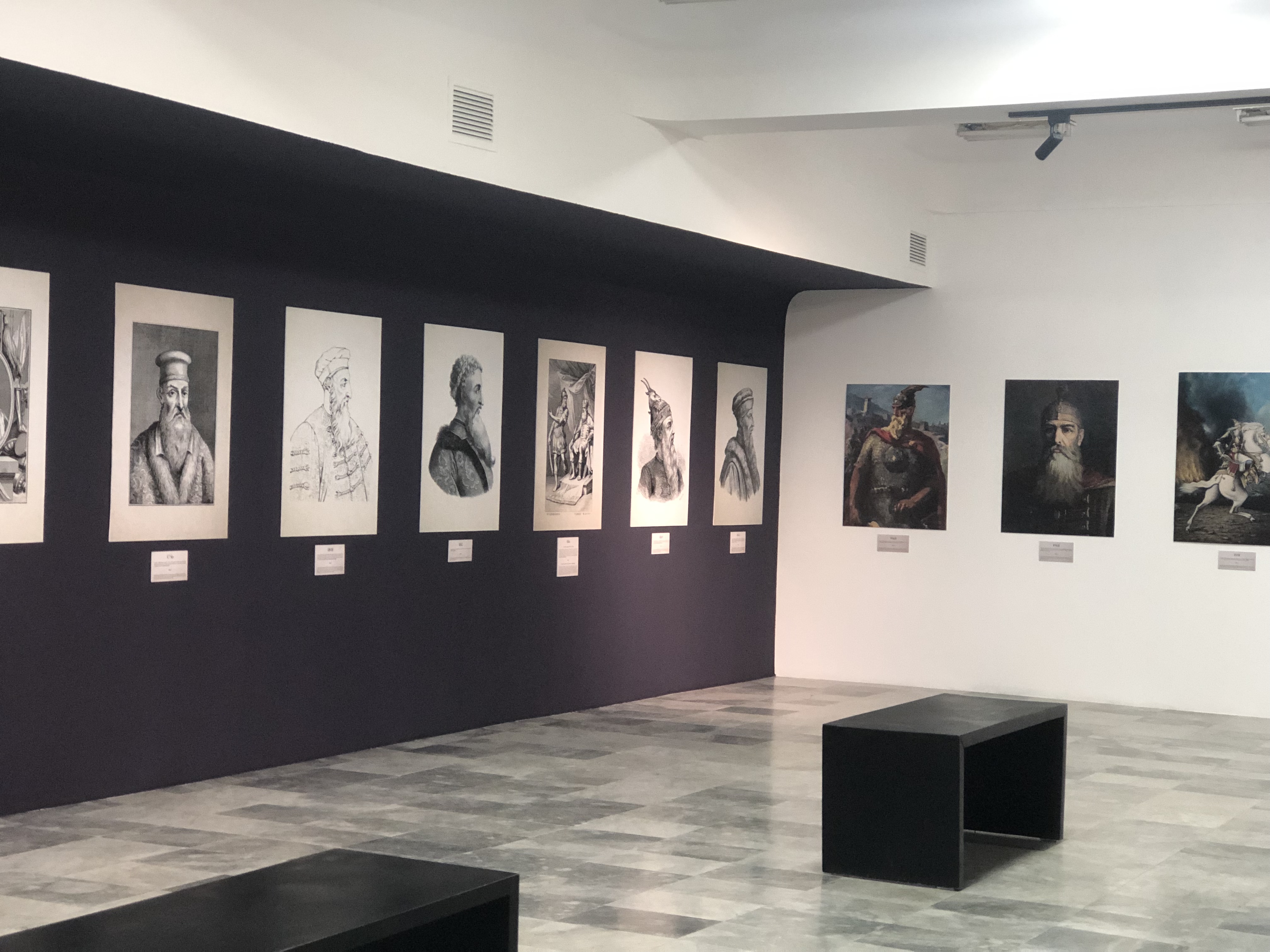
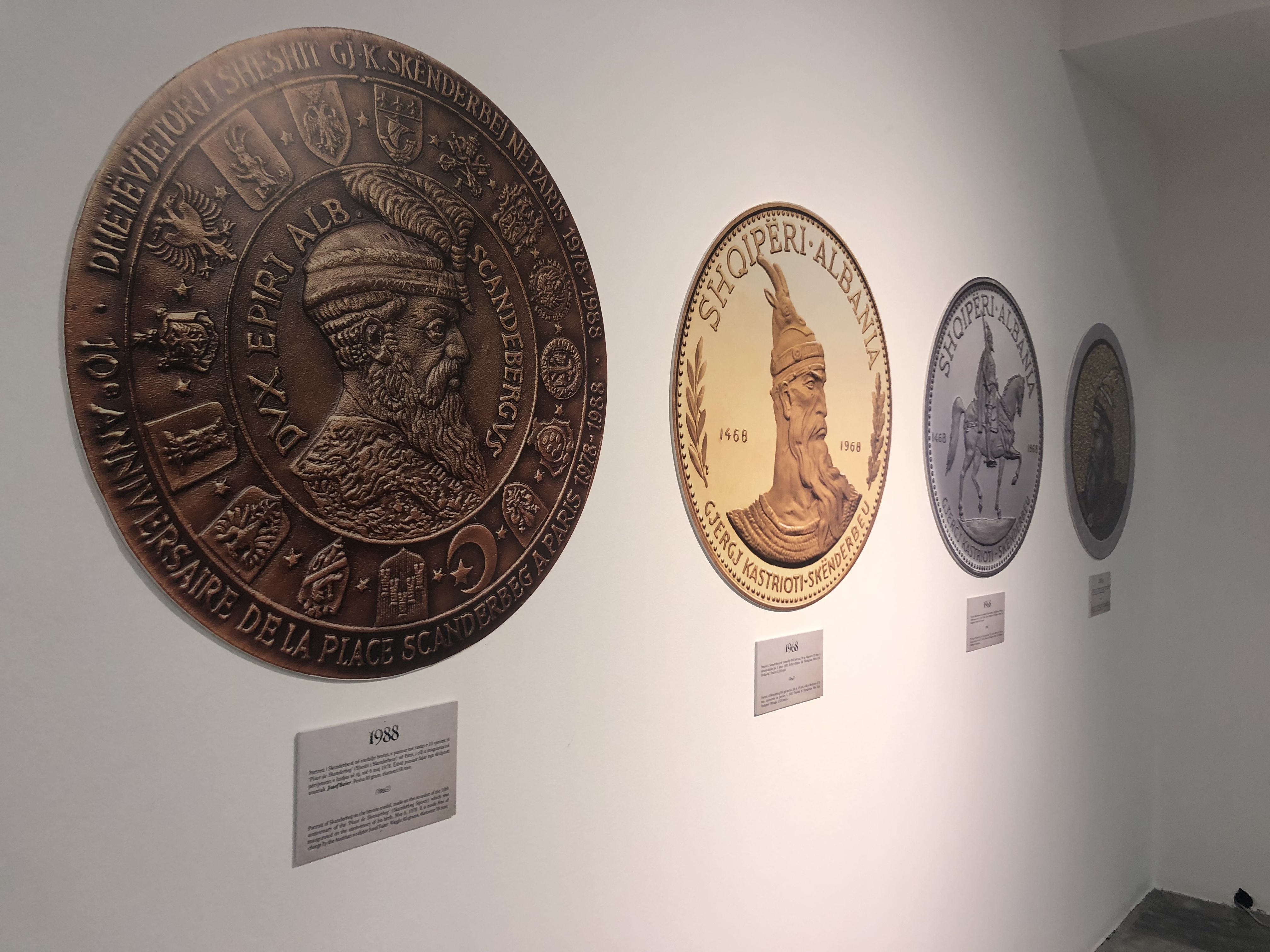
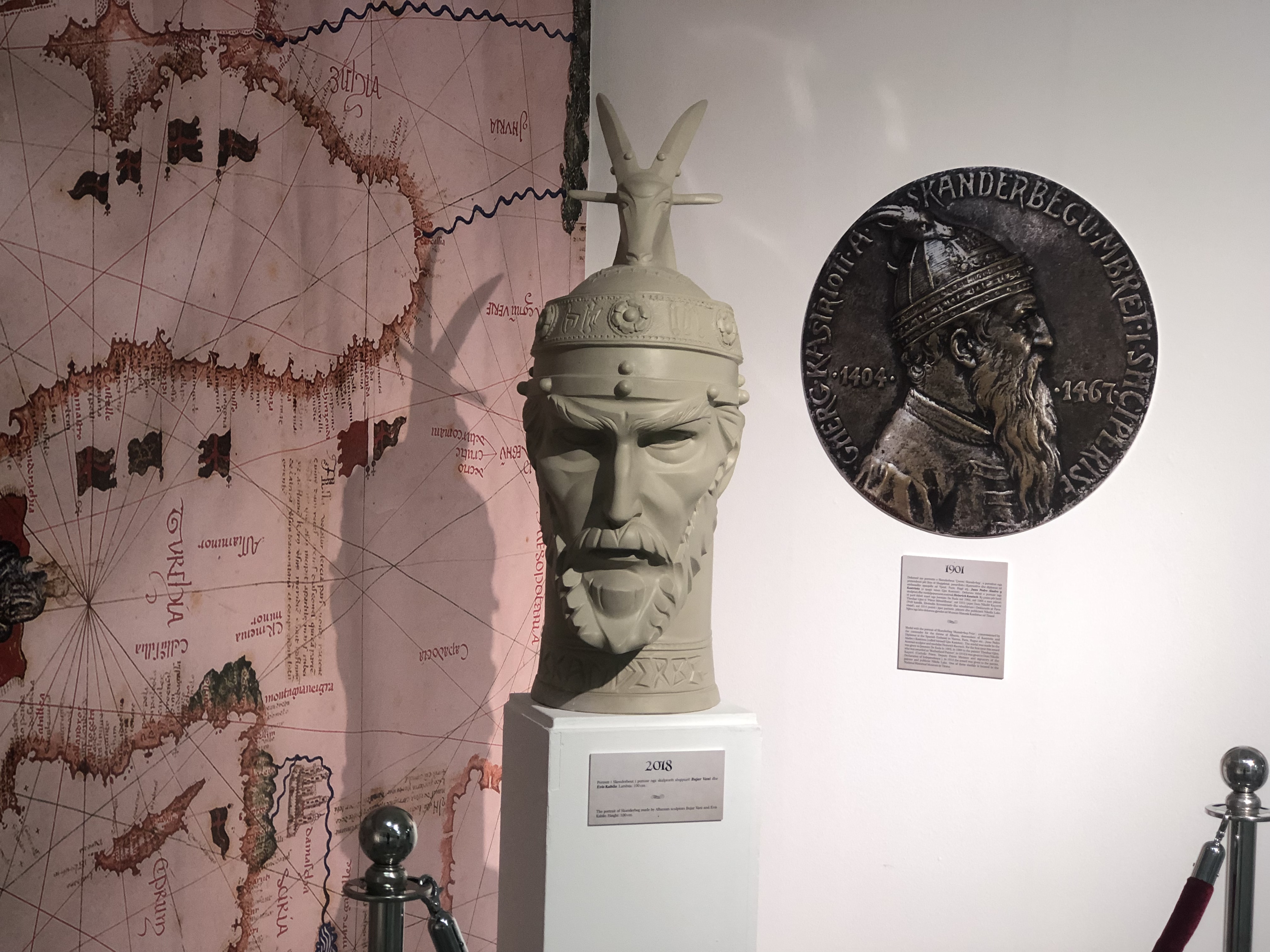
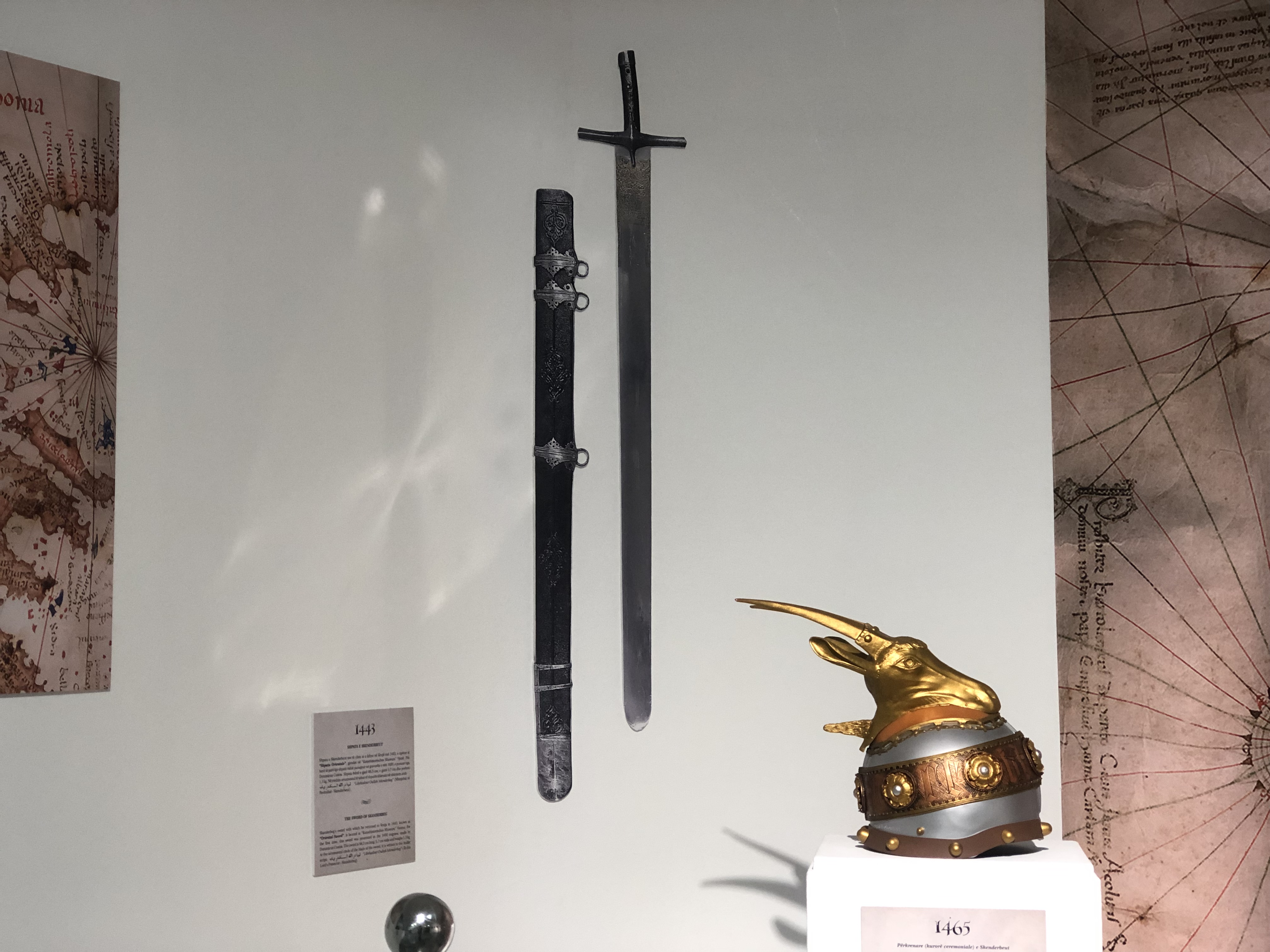
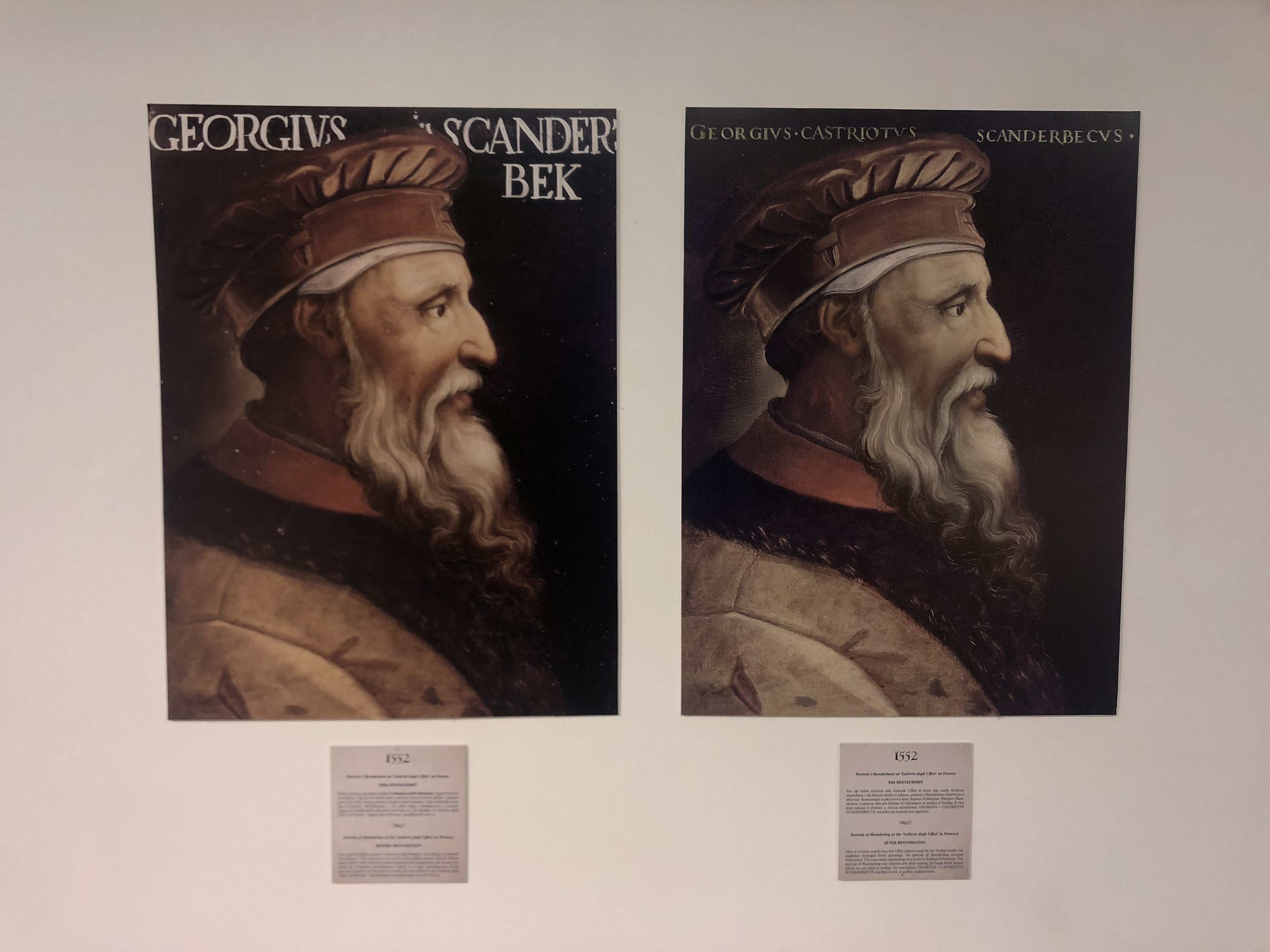
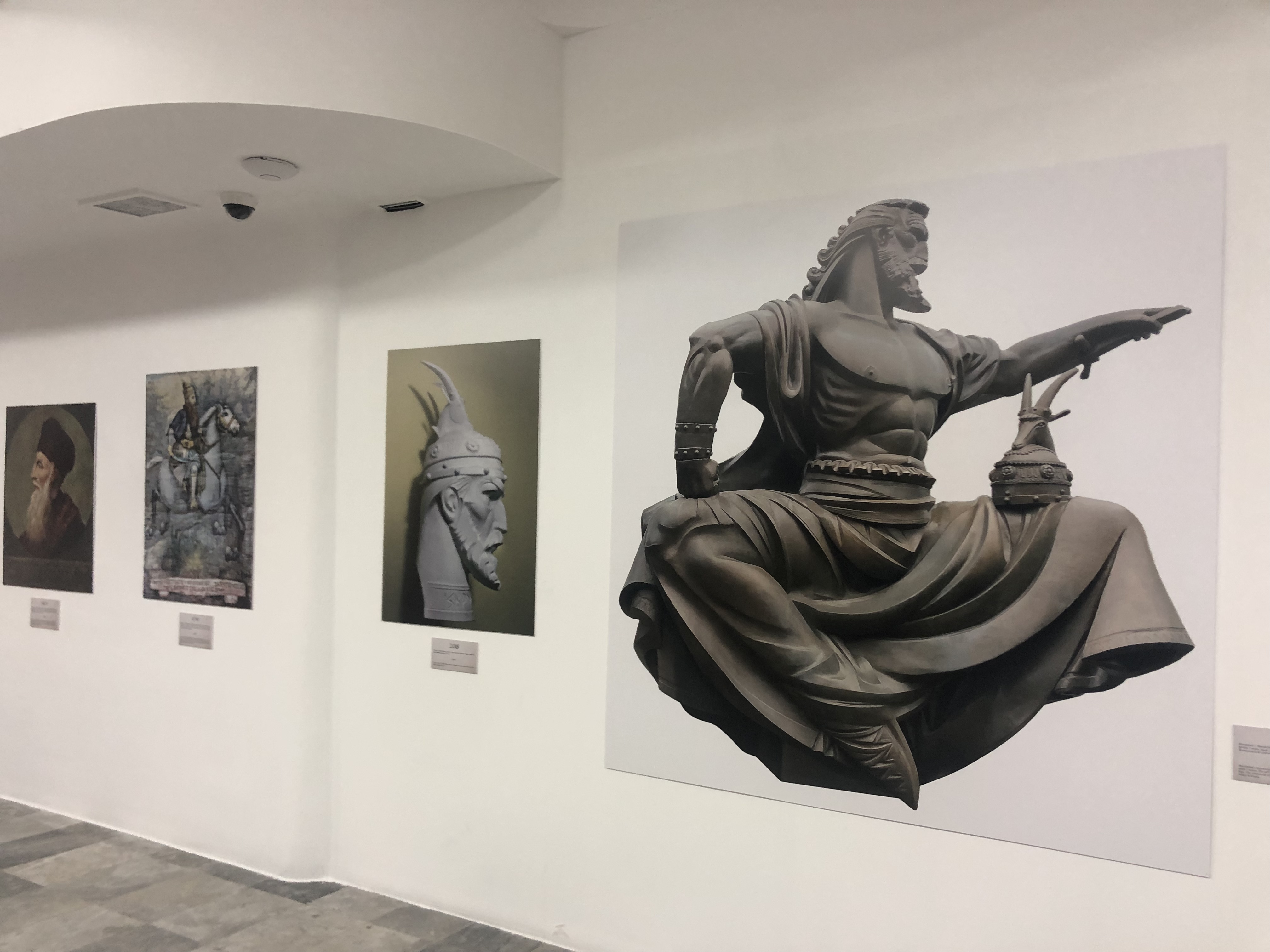

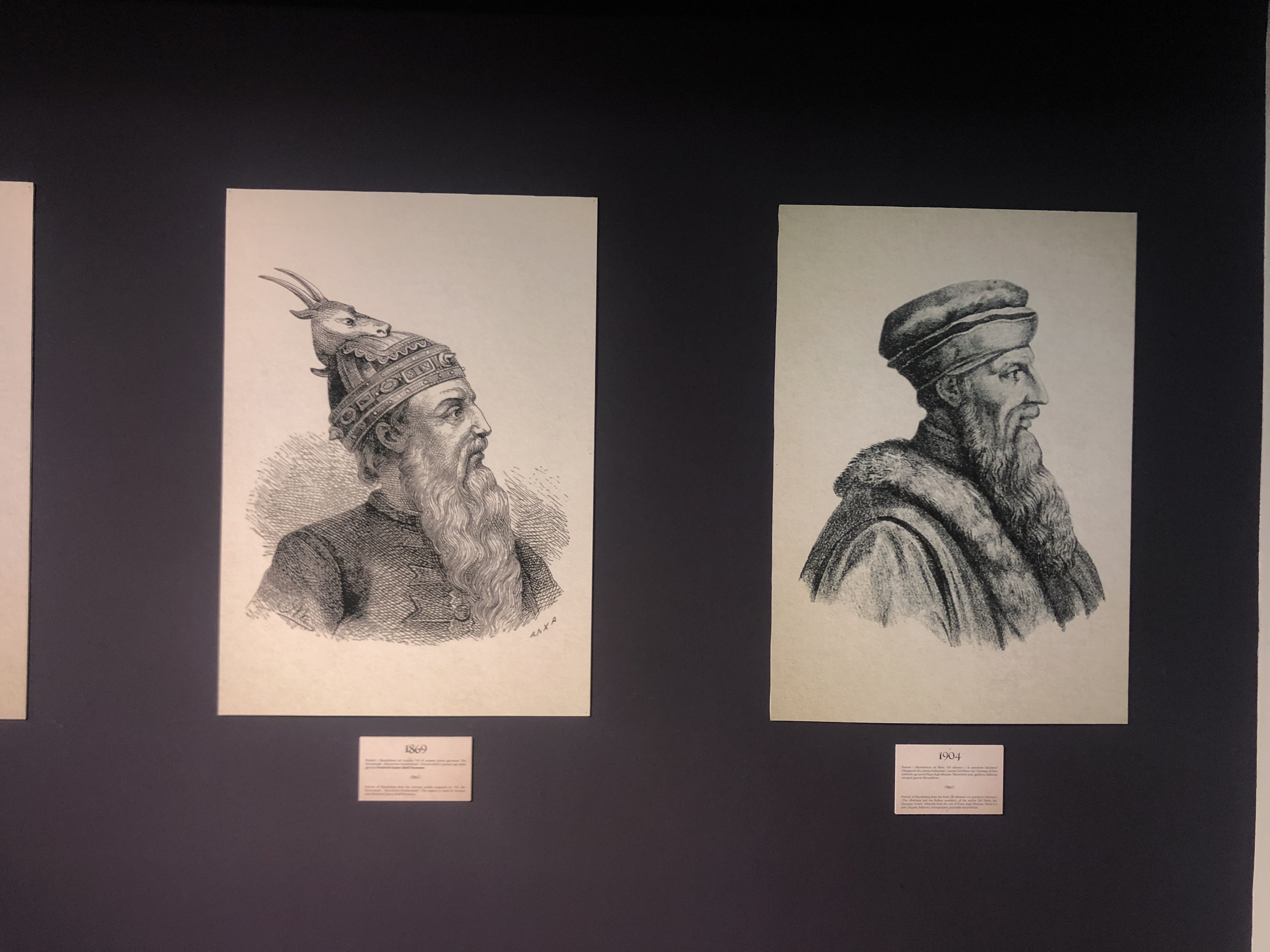
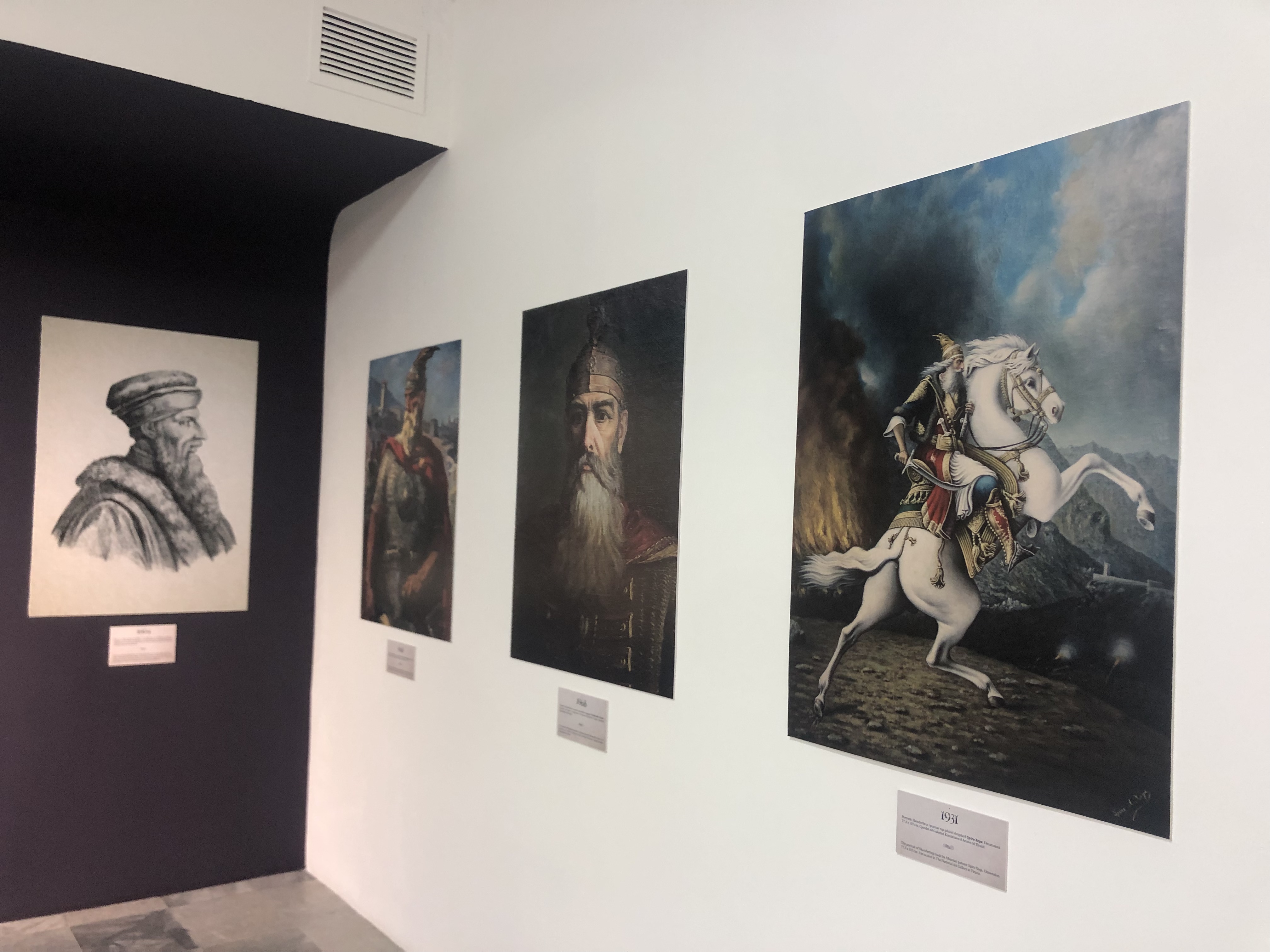

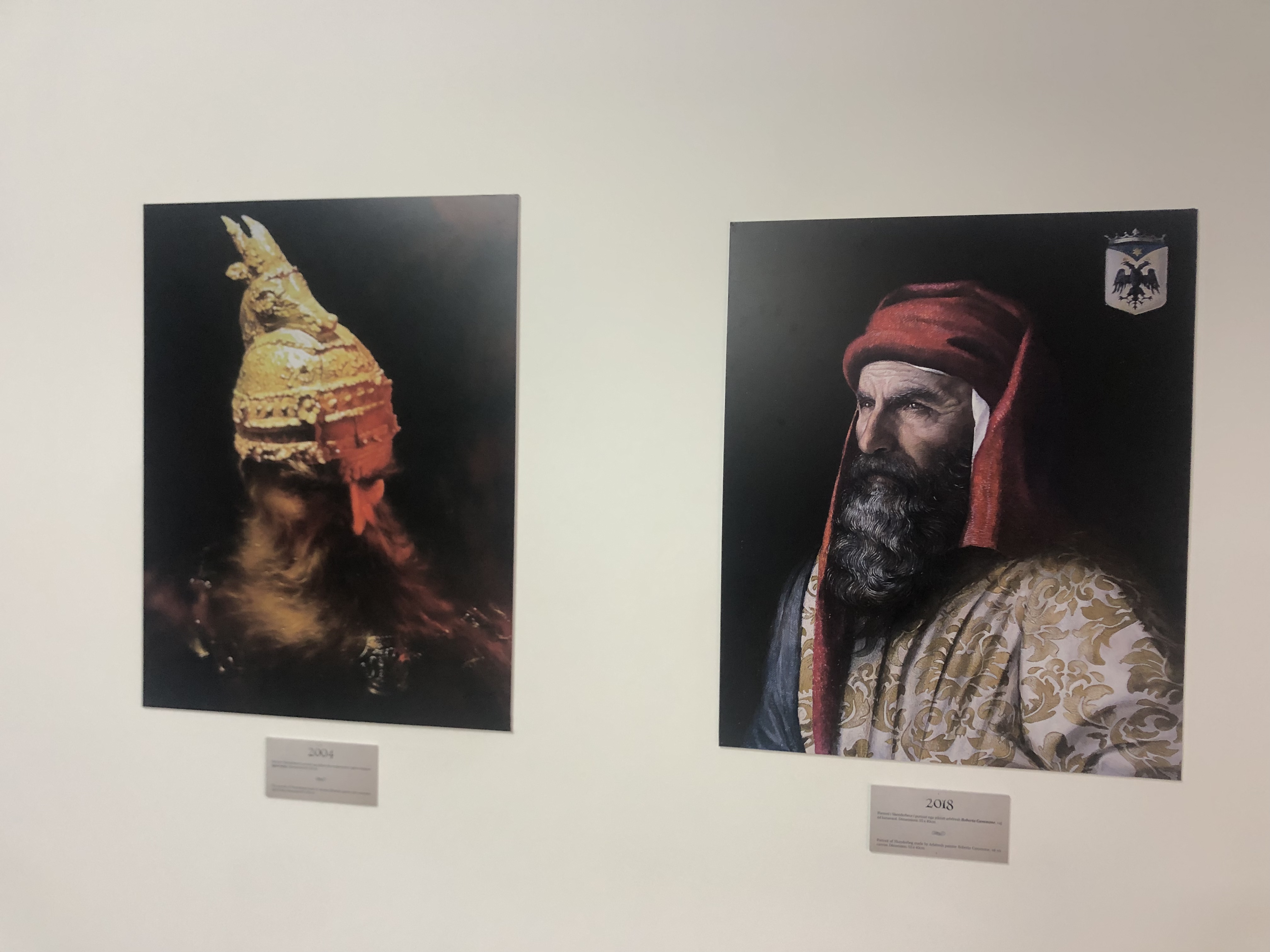
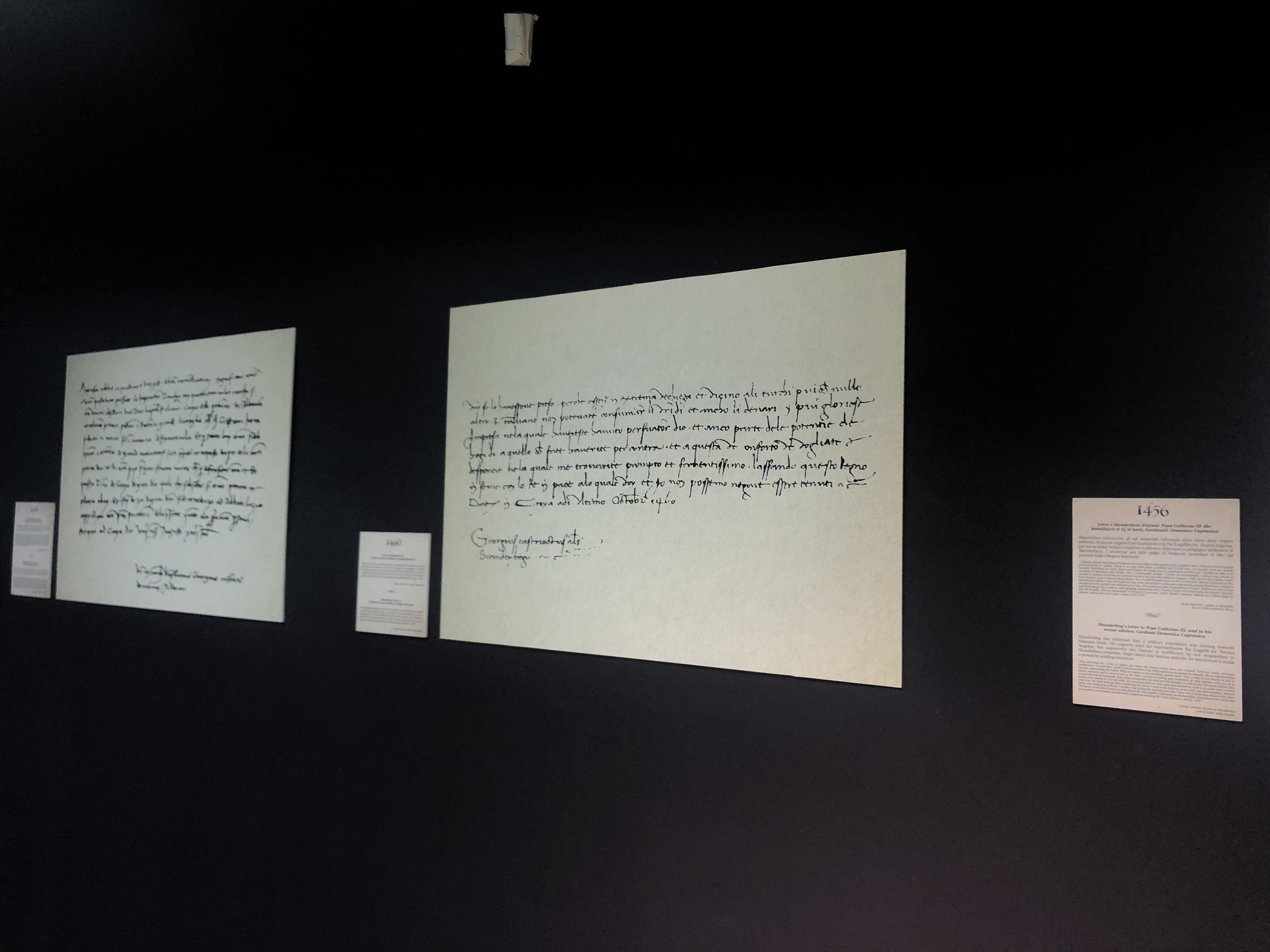
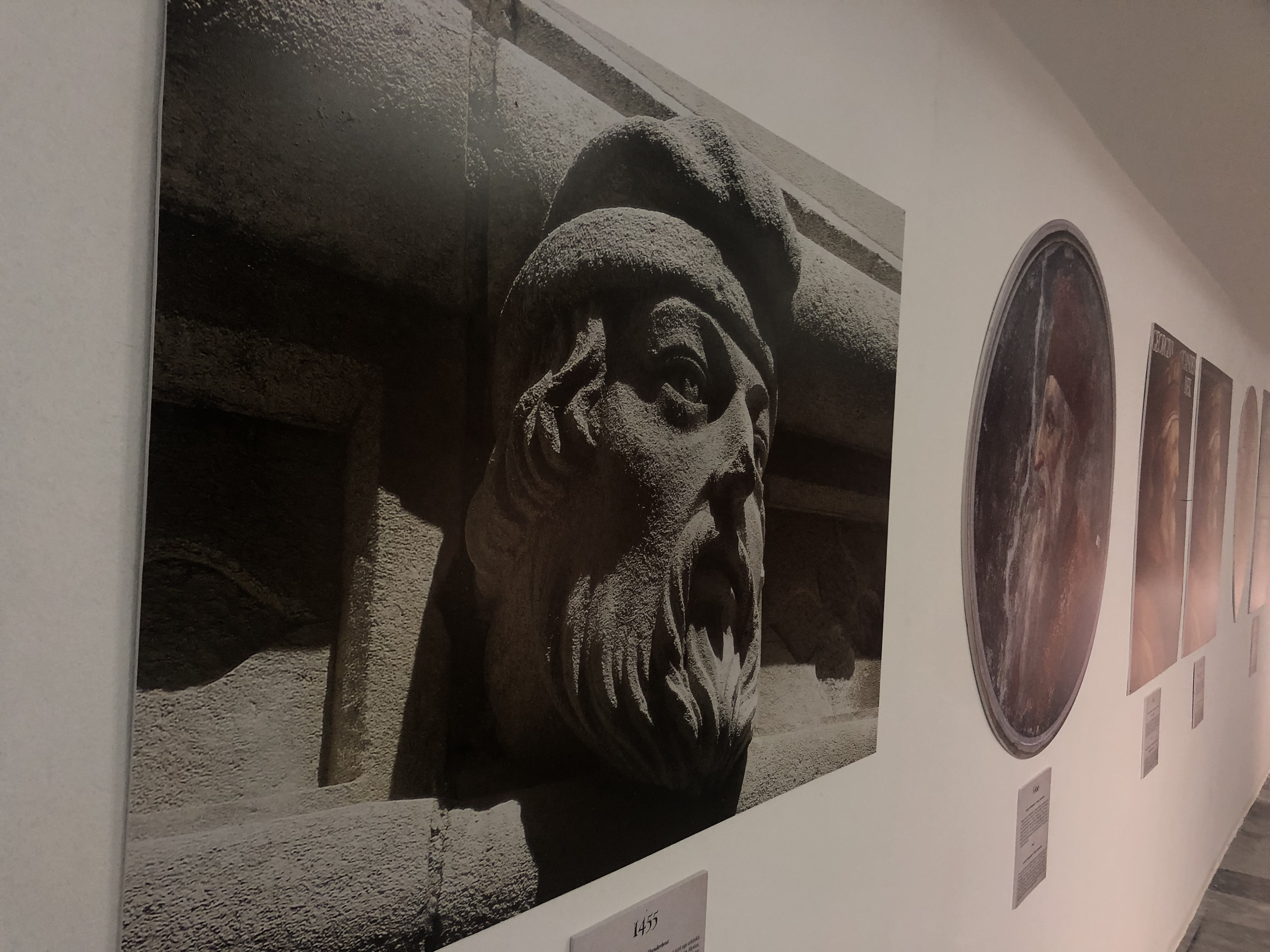
Skanderbeg Portraits Over the Centuries Exhibited in Prishtina
Naim Spahiu, acting director of the National Gallery, told Prishtina Insight that many visitors were interested in the exhibition.
To publish his book, which inspired the exhibition, Tashi said that he found most of the portraits in places that Skanderbeg had connections with at that time – in the Vatican, Florence, Milan, Verona, Dubrovnik, Albania, and in other parts of the Balkans. Some came from libraries in Washington and New York.
Portraits of Skanderbeg Over the Centuries is now part of the world’s major libraries, in Jerusalem, Vienna, Rome, Washington and elsewhere.
Tashi plans to transfer the exhibition first to the National Gallery in Skopje, and the University of Tetova, in North Macedonia, and then to the Mother Teresa Cathedral in Prishtina, the National Gallery in Tirana and the Association of Albanians in Zagreb, Croatia.
Among the portraits is the first known portrait of Skanderbeg, a bust sculpted 13 years before his death by the Albanian sculptor from Durrës, Andrea Aleksi, in 1455. This bust is carved in stone. The head of Skanderbeg was placed in St James’s Cathedral in Sibenik, Croatia.
An imaginary portrait of Gjergj Kastriot by Rembrandt van Rijn and engraved by Jan Joris van der Vliet is also exhibited alongside portraits engraved on coins and banknotes; the figure portrayed from the film Skanderbeg, an Albanian-Russian co-production; portraits from the books of Marin Barleti, to the monument created by the Albanian sculptor Bujar Vani in 2022.
Skanderbeg is one of the most iconic figures in the history of Albanians, leading the nation’s resistance to the Ottoman Empire for 25 years. On his initiative, on March 2, 1444, the League of Albanian Princes (League of Lezha) was founded in Lezha. He died on January 17, 1468 in Lezha and was buried in the Cathedral of St Kolli in Lezha.
The exhibition will be open at the National Gallery in Prishtina for a month.
10 February 2022 - 17:00

From flour bags to gallery walls, the young Gazan artist Hussein al-Je...

Kosovo art students bring their ideas to life by exploring current eve...

Marking the first anniversary of BIRN’s Reporting House exhibition, ...

BIRN’s Reporting House, a museum to protect Kosovo’s collective me...